Comments (66)
alabamaav
6 years agoGreetings, I am using the FEIT model # 73983 LED shop lights for my plants. They emit 3,700 lumens ar 4,000 K color temperature (cool white). The flower colors look true and the fixtures don't flicker or hum like fluorescents. I have them on timers for about six hours a day and some residual light from a north-facing window. They are more efficient and intense than fluorescents also. Don't have them on for too many hours or plants may get damaged.
lucillle thanked alabamaavalabamaav
6 years agolast modified: 6 years agoDarker-leaved AV varieties that need more light can be placed in the middle of the shelf, while ones that need less light such as many of the species, yellows, and lighter green leaves should be grown further from the light source on the edges of the shelf. If plants are acclimated to natural light and they are switched to LED, there will be some growing pains. Some of the outer leaves may need to be removed sooner than planned. Observe the plants and place them accordingly.
Related Professionals
Eden Prairie Landscape Architects & Landscape Designers · Jennings Landscape Architects & Landscape Designers · Milwaukee Landscape Architects & Landscape Designers · Redondo Beach Landscape Architects & Landscape Designers · Towson Landscape Architects & Landscape Designers · Washington Landscape Architects & Landscape Designers · Americus Landscape Contractors · Fountain Valley Landscape Contractors · Gresham Landscape Contractors · Hawaii Landscape Contractors · Kearny Landscape Contractors · Milford Landscape Contractors · Pahrump Landscape Contractors · San Benito Landscape Contractors · Woodbury Landscape ContractorsTiffu (Oregon 8b)
6 years agoJeff -- This is round two of trial and error with the Espoma. It's just not a good fit for me, I'm thinking. At least I caught the over-fert signs before it was too late this time. I've heard good things about the DynaGro and it'll probably be my next trial. Cheaper to buy a new fertilizer at this point than to keep destroying plants.
Paul/Irina -- Interesting note on the spectrums. Looks like the ones I have are not true "white" LEDs, but blue LEDs either coated to calm the intensity, or combined with red and green LEDs to appear white. I have a bum bulb fixture -- may take it apart to see if I can figure out which. Blue makes sense with the foliage growth I've been seeing!irina_co
6 years agoMy understanding that all LEDs are white - and LED blue or red has one and the same source. The colored coating - something similar to a nail polish filters the light and reduces the intensity of the non-red or non-blue parts. As a result - you have much lower intensity light - but in selected wavelengths range.
Is it good or bad - it reduces the overall intensity and prevents the burn. Supposedly red only or blue only is stimulates either vegetative growth or blooming. It is probably makes sense to be used on a short lived crop - like MMJ - when you stimulate the vegetative growth of the plantation - and then switch them all to bloom, I do not know all the particulars - but anybody interested can find details on Internet. What works for MMJ should work for our plants too - but it is probably more of interest to the big commercial growers. They need to have their crop ready on time
alabamaav
6 years agoLEDs are not all white with different filters. Red, green and yellow ones came first decades ago then blue and other colors later. White is a relatively recent breakthrough. I did not like the appearance or high cost of the red/blue LED lights. I grow the plants because I enjoy them and the unusual reddish glow would preclude that for me.
Paul MI
6 years agoAlso depends upon in what situations one is using the light. For example, in a terrarium, even fluors often emit and undesirable amount of heat. One of my terrs -- a 90gal tank -- has LEDs and they have made a significant difference in the temperature of the terr from when I was using cfls. There is also the benefit with LEDs regarding a longer lifespan. The light quality with fluors only remains at that original level/quality for 6months to a year. Also, with a standard 4ft tube, for example, the last 8-12 inches of tube on either end emits significantly less light than the rest of the tube. LEDs don't have these issues.
irina_co
6 years agoPaul - measure the intensity under the last 8 inches - and there is going to be a drop under LEDs as well. It is correct that each individual LED in a tube performs the same in a middle and on the edge - but because there is less overlap of light on the edges - the intensity will drop. Geometrical optics issues, not the quality of the lights.
I am more disappointed in Costco lights than in LEDs in general - but only for relatively low light requirement AVs, Achimenes grows and blooms under Costco LEDs like there is no tomorrow. A lot of rhizomatous and tuberous Gessies do well - I just need to stick to the high light plants.
I think we are moving in the right direction with LEDs - and eventually the industry will provide us with an inexpensive solution with a correct spectrum and intensity. Right now - one of these components is always missing - either too bright or way too expensive.
i.
lucillle
Original Author6 years agolast modified: 6 years agoTwo of the 6 T5LEDs I ordered will not be used for AVs, so I decided to used them to boost the light in a few of my orchid shelves that needed an additional bulb in the reflector. I have on hand some 3M roll adhesive that is a strip maybe 1/3 wide. The LED lights are so lightweight that I was able to simply stick them on the existing reflector with my 3M adhesive. This was done two days ago and they are still holding fast and providing light.
Paul makes a good point about heat. I have a bunch of T5 Fluorescents and they do a good job, as well as those curled fluorescent bulbs. But they emit heat, not a lot but some, and because I have so many, as well as the expense for electricity to use them for the AVs, there is the cost of additional air conditioning to remove the heat. It is not much of an issue now but in August in Texas when daily outside temps are extremely hot, it can be an issue.
Of course hobbies mean spending money, but less expensive alternatives are welcome for those of us who have less than unlimited funds.
Jeff Zenner
6 years agoI went to a show at one of our local nurseries. They had all of their lighting options on display to include a reasonable selection of LED's. This was a year or two ago and so technology has improved but I did not like the way the LED's made the plants look, especially the blooms.
I would think that in another year or so, the experts will have figured out how to meet the needs of small time growers with LED's. The big time guys can afford the current high price of horticultural LED lighting. After all, they sell their plants for $400 an ounce!
irina_co
6 years agoNot in CO. We have such an overproduction of pot... Grows are closing, hydroponic stores go out of business, I had a very productive visit to the clearance in one.
I.
Jeff Zenner
6 years agoYes, I can believe that. It was and probably is a huge cash cow but there can be a lot of pitfalls. I read a story in a magazine at the dentist office about the "boom" towns in Colorado. The guys that got in on the ground floor are all millionaires. Big business has taken over the legal pot biz since then and the rest have all gone underground in what is described as a "legal pot growing environment".
irina_co
6 years agoYup - there are big warehouse type facilities with modern equipment, white robes and guards. And a good amount of people growing a dozen permitted plants in a basement for their own use. Everything in-between - disappearing fast.
Paul MI
6 years agoLucille, many of the commonly found LEDs (not grow light LEDs) I have seen have their color output in the yellow spectrum (3000K) which is one of the least useful for plants. Ideally, plants want light heavily in the blue part of the spectrum for vegetative growth and red for flowering. Unfortunately, most of us do not like viewing plants under "purple light". :-D
Even daylight spectrum has its issues. (They are not truly full daylight spectrum btw.) Much of that light is not in the best spectrum ranges for the plants. But at least the light and the plants look better to our eyes.
One of the issues with cheaper non-growlight LED tubes/lights found at a BBS is that they are not designed for prolonged use. If one reads the box, they typically say they will last for 30 000 - 50 000 hrs which would be all well and good. However, in the fine print, all the ones I have found at the BBS have stated this number is based on 3hrs of continuous use. How many of us only run our plant lights for 3hrs at a shot? This raises some question as to how long will they last when run continuously for 8-12 hours/day.
As with any light that I know of, light quality declines as the bulb/tube ages -- even though our eyes will not know the difference. Haven't found much yet regarding a recommended time of use before replacement guideline.
lucillle
Original Author6 years agoPaul, I think you speak of the warm whites at 3000, the daylights are more of a 6500 spectrum.
I'm sure LEDs will undergo changes and advances, the energy savings and possible long life is already bringing change, recently my apt. complex changed out their ceiling spotlights to LEDs, that is 400 apts here but the management company manages tens of thousands of apts. I'm sure along the way there will be paths that will show what new research is needed.
As far as light decline, I too haven't seen much, but they work a different way than other lights so maybe the info is not yet there.
irina_co
6 years agoAs usually - all depends on a price - lets say an affordable T5 LED - has 30 LED chips on a string inside the tube in a year several can be down - but the tube will still be working. A bit less light - but still OK. For the garage - it is fine - but we will start losing intensity... That's why the high quality ones are expensive - the LED chips are stable.
lucillle
Original Author6 years agolast modified: 6 years agoWell, we lose intensity over time with fluorescents as well, so I see no big difference. Are we relegating the LEDs to the garage because they are new kids on the block? Or do you have statistics available that describe relative degradation of the various lights?
Cheryl
6 years ago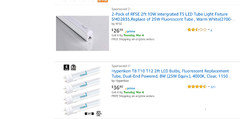
Would these specs be acceptable or close to what you have? Everything else I found on Amazon came in multiples of 40 to a pack and quite pricey.irina_co
6 years agoSo far - my AVs grow better under fluorescents than under Costco LED's.
And yes - you are correct - the intensity goes down on fluorescents as well - and it can go down 50 % or more.
I am thinking that when the fluorescents were the only choice - the recommendation was to use one warm white and one cool white in a fixture trying to cover both blue and red light absorption areas of chlorophyll. The fancy stuff was full spectrum plus grow light tubes. So we really didn't use just any shoplight from the garage. We tweaked it. The LEDs - it is a new source of light for us - and I m not sure that any inexpensive LED fixture we can buy is appropriate for the plants. I can only say that Costco lights belong to the garage.
What Cheryl is showing - is there is warm white LEDs - and a bit higher temperature - second type.
According to the standards - Warm White is around 2700K to 3500K, Natural White is around 4000K to 4500K, Cool White is around 5000K to 6500K.
So if we use the same approach as with fluorescents - we need also to find a combination of warm white and cool white LEDs.
I think we are getting there.
lucillle
Original Author6 years agolast modified: 6 years agoWhat Cheryl is showing - is there is warm white LEDs - and a bit higher temperature - second type.
I don't know if Cheryl's Amazon is different than mine, I see 3000 and 6500K and vast competition in the Amazon 4 foot fixture/lamp range, many more examples than what she is listing. And Paul commented in this discussion that the 3000K LED spectrum was one of the least helpful for plants.
Many people seem to have varying opinion.
I did a search on the FB African Violet Buddies just now, there is tons of positive info. Joyce Stork reports good results with an LED project in one thread. I think I will continue to read there, and design my LED shelves based on the tweaks others before me have accomplished.
Paul MI
6 years agoYou are correct, Lucille, light from fluoro tubes does degrade over time -- markedly so. Though it has been a number of years, I recall it being advised best to change out ones fluoro tubes which one was using to grow plants every year -- keeping them no more than two years -- in orchid circles. Reason being that even though the light emitted was still fine to the human eye (no noticeable decline) the output was significantly less from a plant's "point of view".
Cheryl
6 years agoLucille, I’m sure our Amazon is the same. Haha - is there more than one? I simply narrowed my search to “T5 2000 lumen white led”. I was looking to see if Tiffu’s fixture would be beneficial to my environment. Certainly hope you find what you are looking for. Good to know about Joyce Storks experiments. What forum was she from on FB?
lucillle
Original Author6 years agoPaul I recall recently here on this forum a statement that AVs are at their best their first couple of years and then decline. I'm wondering whether the decline is inherent in the AV, or whether after two years go by, lights are not replaced, and the violets are simply not getting what they need to flourish any longer?
alabamaav
6 years agoThe current issue of the African Violet Magazine has two articles on LED lighting: page 24 and page 60. Your mileage will vary with LEDs depending on the lumen output and color temperature. What I have noticed over time is that my FEIT shop lights from Costco (3700 lumens, 4000K color temp) were not weaker than fluorescents, but significantly STRONGER. If one were to have them on for 10-12 hours, the violets would be bleached due to the intensity. When I first started, it was necessary to scale back the time from 11-12 to eventually 6 hours over time. I also have some ambient light from a North- facing window, so that factors into consideration.
alabamaav
6 years agoNot all violets decline after two years. Some varieties are just weaker than others, but there is something you can do about it. If it has a neck, use a clean knife to remove enough of the rootball to bury the neck. Scrape the scar tissue off the neck, use fresh soil mix and use plastic wrap or cover to maintain humidity if necessary. Take a leaf or two to propagate in case the plant does not recover. Most will grow correctly after healing from the procedure.
Tiffu (Oregon 8b)
6 years agoI had some significant bleaching with my setup in the beginning as well. I mitigated by turning off some of the lights on my shelf. I think I also have a (temporary) advantage in that my light sources are coming from the sides instead of from above. The light is not nearly as intense as it could be. Whether this remains an advantage as the younger plants fill out and become larger will have to be seen.
I've noticed that plantlets started under the lights are far less likely to bleach than new plants brought into it -- probably the same concept as hardening outdoor plants to full sun after wintering indoors, I imagine. I am seeing very nice growth on the young plants, both blooms and foliage, and while it might be able to get "better", I am happy with my setup! But there will always be room for improvement.Here's my first big bloomer under the lights. :) I think it's coming along nicely enough.

dviolet1
6 years agoWow, big blooms on such a small plant. And, a new favorite color of this year. What is the plant name?
Tiffu (Oregon 8b)
6 years agoThis is Still Waters. It's one of my favorite varieties, and one of the few I keep on my shelves all the time. It definitely darkens from a this-could-be-periwinkle to for-really-real-lilac over the course of the bloom life, but for me the dark foliage is very well behaved and attractive and the blooms last FOREVER.
It's not particularly spectacular. Some might even call it boring. But in my environment it is incredibly reliable and it hits all my sweet spots!irina_co
6 years agoI think Neil Lipson recommended one type in an AV magazine. Before he was saying - until we would see LED grown AVs winning competitions.. he was not able to recommend anything - but in a last one - somebody already won competition - and he quoted the type. If anybody has the AV magazine on hand - please post it. Neil is an experienced grower, tech guru and an extremely meticulous man.
I found this graph - LED spectra.
And here is how 2 type of chlorophyll absorb light: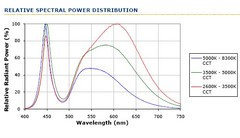
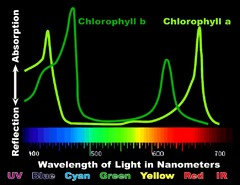
What I see is that if you use LED with 5000K and up - the relative amount of light in a red part of spectrum drops and plant will not get enough energy in this part of spectrum. While lower K LEDs have it.Quote:
Colors below 3,000K are known an warm colors (red). The spectrum of light is important to horticulture because each spectrum triggers different responses from the plants—blue light induces vegetative growth, red light induces flowering.
End quote.
So we need both
lucillle
Original Author6 years ago"Lucille, many of the commonly found LEDs (not grow light LEDs) I have seen have their color output in the yellow spectrum (3000K) which is one of the least useful for plants. Ideally, plants want light heavily in the blue part of the spectrum for vegetative growth and red for flowering."
"What I see is that if you use LED with 5000K and up - the relative amount of light in a red part of spectrum drops and plant will not get enough energy in this part of spectrum. While lower K LEDs have it."
So one needs mixed values, high and low, but not in between? Many of the FB violet people who have tried white, not purple, LEDs are reporting success using LEDs. Perhaps they are using two light sources one high and one low.
Jeff Zenner
6 years agoI think there is no stopping the forward progress in lighting, for people and plants. The LED (as it currently exists) is just one stepping stone in the pursuit. In a few years, what is currently being called state of the art, will be abandoned as inefficient. I will stick with my CFL's until they get the LED's more affordable.
It may not be that long. From what I have read, there are a number of groups working at developing affordable LED's that operate in the light spectrum that is most useful for plants.
We'll see!
irina_co
6 years agoOops - I mixed up red and blue in a first post - last quote is should be on the point - for whatever reason the pot growing supply store sells warm whites for vegetative growth - who knows them mmj people.
Anyway - there are secondary pigments that are capable to absorb some light carotenoids work in a green range and anthocyanins in yellowish green range - but as far as I know the carotenoids are not present in AVs - that's why there is no intense yellow and orange AVs. The yellow-orange part of the spectrum seems not utilized by AVs.
irina_co
6 years agoI finally found the article by Neil Lipson. It is in a February 2018 AV Magazine, page 40. The lady won BIS on Florida Council with Cajun's Blueberry Hill standard grown under Thinklux LED Grow lamps, you can screw them in a regular fixtures. But viewing the plants under this light is challenging - the grow area is flooded with a candy pink light.
https://www.earthled.com/collections/earthled-growled-series-led-grow-lights
I.
dviolet1
6 years agoThat bright pink might work in a plant room. The purple lights in my F.R. aren't that bright and I do turn them off when I want to show off those plants to someone.
I don't have a background that helps in understanding those graphs. Does the x-axis numbers translate in any way to temperature (Kelvin)? Apologies if my question is way off track.
irina_co
6 years agoNo, the x-axis is the wavelength or the color of the light. If you remember from the school - the white light - sunlight is almost white in our perception - if passed through the prism - can be seen as a rainbow color stripes. White light is a mix of all colors.
Vertical axis on a first graph - shows what wavelengths (colors) the LED emits depending on the K. Spectrum has similar shape for all 3 types of lamps - means it is not a horizontal (almost horizontal) like a sunlight - but there is more energy emitted in blue range (around 450 nanometers) and in yellow - red range - around 600 nm. The higher the K number - the less energy is going towards the red part of spectrum.
On a second graph = it is absorption curve of the chlorophyll - 2 types of chlorophyll present in any green leaves. What it plant can absorb - it can use up for photosynthesis - for creating plant tissue and plant growth. We can see that only a certain bandwidths of light can be absorbed - the rest is not used by green plants. The purpose of comparing these two spectra - emission by the light source - and absorption by the plant - that we can select proper light sources or their combination - that there is plenty of necessary light in both blue and red areas are available.
The light that is for example yellow - cannot be used by a plant - so if nothing but yellow light is available - plant will die.
lucillle
Original Author6 years agoI'm wondering whether using a small amount of purple/pink light along with white light might be a beneficial compromise, giving the plants a little more usable light without making them look like totally purple alien life forms.
irina_co
6 years agoWe probably can try. Like if the plants live on the northern window - and we want to add a complimentary light with red and blue LEDs. We can see a tint in a day time - and comes the night - gets more Christmasy by a minute.
Sunlight is like a smorgasbord - come - take what you want.
Artificial light - something is always missing - and we are trying our best to produce a balanced diet out of the dry goods pantry.
Another the approach - we can just give plants what they need - red and blue- and do not waste energy on the light they do not use - then it becomes weird. It is a conflict on what plants use - and what plant owners need to function normally. We want to enjoy our plants and we are better with a white light. The closer the light to a sun spectrum - the better we feel.
alabamaav
6 years agoMy LED plant stand receives indirect light from a northern window. It is up against the east wall and about six feet away. There is another stand in front of the window that does not have artificial lights on the plants. The light from the window is not enough for the plant stand against the wall, but perhaps it does supplement some wavelengths missing or insufficient in the cool white LED fixtures.
lucillle thanked alabamaavlucillle
Original Author6 years agolast modified: 6 years agoIrina, I think all of life is a compromise. These plants get coddled and have it pretty good, and in return they have to get looked at sometimes under light that is not their optimum light.
One possibility to make the experience better for both plant and person is a time sharing deal where part of the day the plant is happy in alien purple light, and part of the day the human is happy in daylight equivalent.
I appreciate all the input in this discussion. One finds occasionally on other forums people who produce more heat than light so to speak because they have made up their minds on an issue before the discussion even gets started. Here and on the violet FB forums that I have seen, it seems that everyone brings their thoughts to the table, and readers use what is useful to them from the different perspectives.
irina_co
6 years agoRight now looks like we all use different LEDs and are still in a process of evaluating them... the proof of the pudding is ... if the AVs under these specific light will look good several months later - that's what we need to know.
At the end - only their "opinion" matters.
But I personally draw the line on the alien light!
So - we need to return to this discussion every so often.
I think people who use LED as a supplement to the natural light are OK anyway as long as the plants do not get burned. If we are using LED only - that's a valid experiment.
Tiffu (Oregon 8b)
6 years agoMine are LED only. They're in a closed bedroom where the shades are always drawn. I'll keep everyone updated as mine get bigger! I am sure there will be challenges.
Also, super agree on the alien light. It made me feel crazy.dviolet1
6 years agoI have 2 Heavens A-Calling that have both been growing under alien light since re-potting them from their 2" cups. Here's how they've been performing under those lights:
Not the perfect Show-quality rosette but fits perfectly in the home of the casual hobbyist.
October 2017


December 2017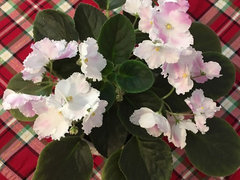
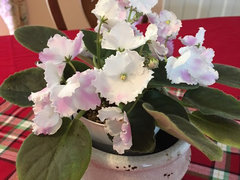
It all depends on the plant as to how they perform under low light conditions with the purple LED lamp.dviolet1
6 years agolast modified: 6 years agoI was trying to relate those graphs to some notes I took a while back for practical purposes in choosing which CFL bulbs to put in my dual light bulb lamps. I thought it would help translate it to choosing LED table lamp bulbs. But I can't see it from the graphs.
Posting what I have for CFL bulbs that seems to working out for me so far. Let me know if any of the below needs correcting, and also if you know how these figures relate to choosing LED bulbs.
African Violets prefer:
10,000 - 12,000 lux
900 - 1000 lumens / foot candles
At least 8 hours darkness
My lamps are using Warm and Cool 40 watt equivalent CFL bulbs:
One 2700 K / 550 lumens
One 5000 K / 450 lumens(Calculators at https://www.rapidtables.com/calc/light/index.html )
irina_co
6 years agoLumen is parameter of the source - the more the brighter. Lux or foot candle (1 fc is roughly 10lux ) is a parameter of illuminance- light flux density on a level of your Aftrican violet crown. It is what's important. Even the bright source with oodles of lumens is useless if it is too far.
you need 200-600fc (2000-6000 lux)
Not to be too technological - if your plants are happy - you found the spot.
Paul MI
6 years agoSo one needs mixed values, high and low, but not in between?
Yes and no. The plants will do best with mixed values. They make the most use of the red and blue areas of the spectrum. They can make some use of the middle but not as well/efficiently so much of the energy in that middle part is "wasted". The least useful area of the spectrum for most plants is green light. Those wavelengths are mostly reflected off of the leaves hence the reason the leaves look green to our eyes. {Even plants which possess the secondary pigments Irina mentioned do not make great use of the yellow to orange range of the spectrum.)
I'm wondering whether using a small amount of purple/pink light along with white light might be a beneficial compromise, giving the plants a little more usable light without making them look like totally purple alien life forms.
I have known a few people who did that very thing as they found the purple light incredibly annoying. From what they said, they felt it made a good compromise.
Qiorgini
last yearlast modified: last yearWhen we were building our house, we doubted if LEDs were to influence the growth of plants. Our electrical installations experts from https://www.fordelectrical.co.uk/ told us that the traditional artificial lighting for African violets and other house plants is fluorescent bulb lights, so I use them without any problems. I prefer one cool bulb and one warm. Some of my friends have said they don’t think the color (Kelvin) substantially affects plant growth. Therefore, I assume that LEDs for plants don’t have to be “led grow lights” but can be traditional led lights. And I have had no problems so far when using them.


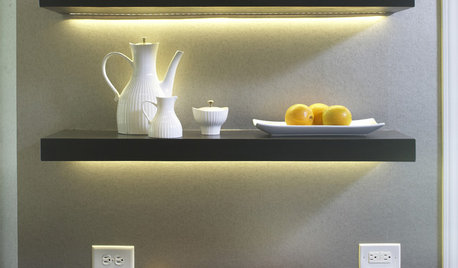
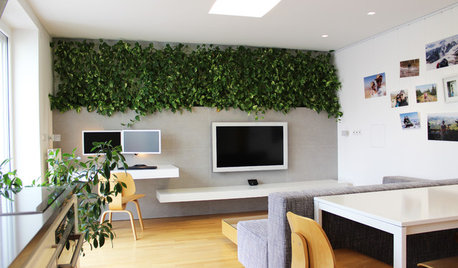

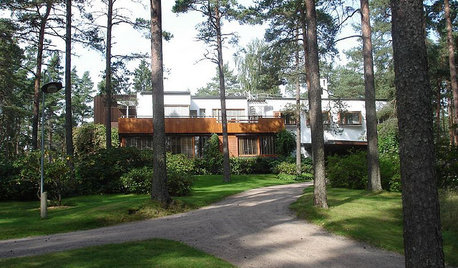
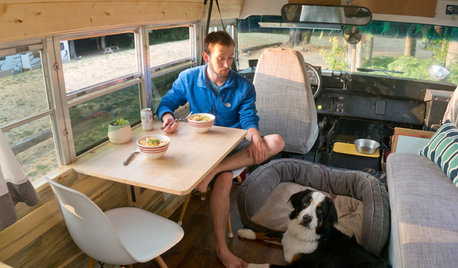
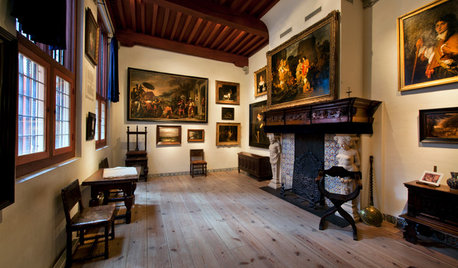
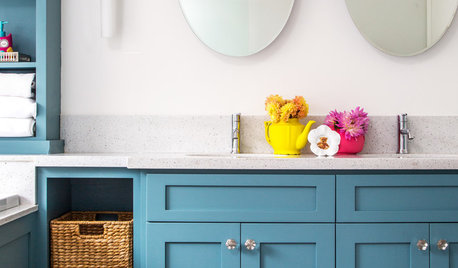
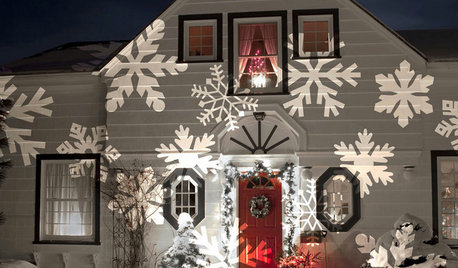






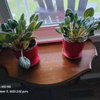
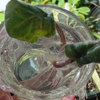
Tiffu (Oregon 8b)